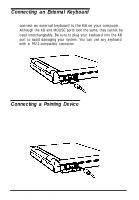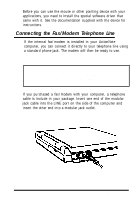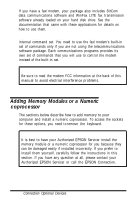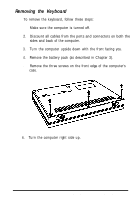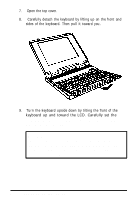Epson ActionNote 500C User Manual - Page 52
Checking the Serial Port Settings, The COM1 port, is capable of sending, and receiving data at
 |
View all Epson ActionNote 500C manuals
Add to My Manuals
Save this manual to your list of manuals |
Page 52 highlights
4. Connect the other end of the cable to the serial device. If the connector has retaining screws, tighten them. 5. Connect the serial device's power cable (if it has one) to a grounded electrical socket. Check the documentation that came with your serial device to see if any other steps are necessary. Checking the Serial Port Settings The COM1 port is capable of sending and receiving data at a variety of speeds and with many different protocols. This means you need to configure the port to match the signals of the serial device. As a general rule, choose the highest speed (baud rate) and the protocol that provides the best error detection. Check the documentation that came with your serial device to see if you need to adjust any of its settings. Note If your application program cannot send printer output directly to the serial port, you can use the MS-DOS MODE command to redirect the output. You can even tell the computer to redirect printer and serial port settings automatically if you place the appropriate MODE commands in your AUTOEXEC.BAT file. See your MS-DOS manual for instructions. Connecting Optional Devices 4-7









